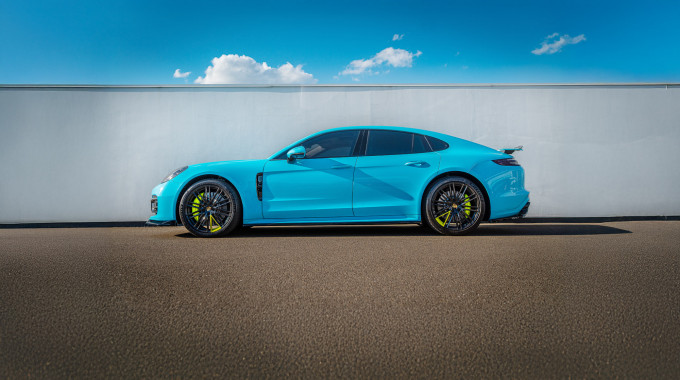
First Drive: 2021 Ford Escape PHEV Review
The Escape gains an advanced hybrid-powered setup for 2021, along with added passenger and cargo space. Canada Drives had the opportunity to put Ford's new compact hauler to the test.
Key Features
- Efficient, practical and well-judged EV/gas powertrain
- Generous passenger and cargo space
- Comprehensive dealer network coverage
Direct Competitors
- Toyota Prius Prime
- Mitsubishi Outlander PHEV
- Hyundai Tucson PHEV
Ford renewed its Escape compact SUV for the 2020 model year and made a series hybrid (also known as ‘full hybrid’) available from launch. In 2021, a plug-in hybrid (PHEV) joined the range. It combines a 14.4kWh battery for up to 60km of zero local emissions mobility with a 2.5-litre gas engine for peace of mind on longer runs.
The average Canadian commute is a 38km round trip, so many owners won’t have to resort to the gas engine in day-to-day use. Combined fuel economy with a full charge is an impressive 2.2Le/100km.
Price: how much will the 2021 Escape PHEV cost?
- SE PHEV FWD: $37,649
- SEL PHEV FWD: $40,649
- Titanium PHEV FWD: $43,749
The PHEV is available from the SE grade upwards. All grades share the same front-wheel-drive-only, 220-HP powertrain. MSRPs are $37,649 (SE), $40,649 (SEL) and $43,749 (Titanium). Price premium over the regular Hybrid is around $6,000.
2021 Ford Escape Plug-In Hybrid Titanium | Photo: FordPackages are available to simplify the optional extras. Extra tech for the SEL and Titanium comes in the Technology package ($2,500), which includes a Bang & Olufsen audio system. There are more driver-assistance systems (ADAS) in the Co-Pilot360 Assist+ package ($850).
For maximum plug-in luxury, add the Titanium Elite package to a Titanium-spec vehicle for $2,300. The Escape PHEV will tow up to 681kg (the same as the regular Hybrid) but you’ll need the Class II trailer tow package ($600).
Government rebate
Aside from fuel savings, buying an Escape Plug-In Hybrid may qualify customers for the federal government rebate and additional rebates in certain provinces (British Columbia and Quebec, specifically).
2021 Ford Escape PHEV interior and equipment
2021 Ford Escape Plug-In Hybrid Titanium | Photo: FordSYNC 3 infotainment with Android Auto and Apple CarPlay, heated front seats and a basic suite of Co-Pilot360 ADAS systems are standard across all Canadian Escape PHEVs. Drivers can also programme a charging schedule through the FordPass Connect app to help with charge programming.
The SEL and Titanium get seats trimmed in ActiveX, a synthetic, leather-like material that looks and feels great. For real leather you’ll need the Titanium Elite package, which brings other high-end features like a head-up display and panoramic roof. The front seats offer excellent comfort, whatever the trim.
The Escape is one of the most spacious compact SUVs available and the PHEV retains the same interior and cargo dimensions as the regular Hybrid. That includes the handy sliding rear seat, which enables you to favour cargo space or rear-passenger legroom.
2021 Ford Escape Plug-In Hybrid Titanium | Photo: FordOutside, the plug-in Escape looks almost identical to less-electrified models. Unique badging and 18in wheels are pretty much the only differentiators.
Hybrid performance and charging duties
The plug-in hybrid powertrain is where the Escape PHEV differs not only from its siblings but also from most other compact SUVs on the road. Its only direct rivals at the time of writing are the Toyota Prius Prime and Mitsubishi Outlander PHEV.
The complex hybrid-electric system is well integrated, delivering quiet running and seamless switches between electric and gas power through the electronic continuously variable transmission (eCVT).
Below, a quick look at the specs:
- 2.5L Atkinson-cycle I‑4 engine
- 14.4‑kWh lithium-ion battery
- 96‑kW Electric traction motor
- Electronically Controlled Continuously Variable (eCVT) PowerSplit Transmission
- Regenerative Braking System (helps restore energy to the battery as the customer drives)
- Horsepower: 220 (combined)
- Torque: 155 lb.‑ft.
Range and charging times
The battery pack is under the rear seats. It charges in 3.5 hours using a Level 2/240V connection, or 10.5 hours from a household Level 1/110V outlet. EV-style, high-voltage fast charging is not available. Four EV modes manage the battery’s charge, including an EV Charge mode to replenish on the go and EV Later to preserve charge for later use.
2021 Ford Escape Plug-In Hybrid Titanium | Photo: FordEven with no prior charge, the Escape PHEV serves up an impressive 5.8L/100km combined fuel consumption figure, which we were able to match on an extended test drive. But the SUV’s appeal isn’t just about the fuel economy: the smooth, torque-y EV power delivery and quiet cabin are an attractive feature, especially around town.
Here’s a summary of the 2021 Escape PHEV’s range and charge times:
- Electricity + Gasoline = 2.2 Le/100km (128 mpge)
- Gasoline only = 5.8 L/100km (49 mpg)
- Driving Range: 60 km electric / 844 km total distance
- Charge time = 3.3 hr (240V)
As for the ride and handling, the smooth test roads made it hard to assess comfort over rough surfaces, but the Escape felt planted on a twisty road. The lane-keeping assist has a tendency to fight the driver’s inputs, however, so is best suited to highway use.
Verdict: is the 2021 Escape PHEV worth it?
PHEVs will remain a great choice for many families until Canada’s EV charging infrastructure is further developed. Compact SUVs account for one in four new vehicles sold here but plug-ins are still new to the sector, so if AWD isn’t a must, the Ford Escape PHEV will automatically be on your plug-in shortlist. With Ford dealerships as common as any in the country, it’s an efficient option, wherever you live.
If you're shopping for a hybrid or electric SUV, search our latest inventory here.
2021 Ford Escape Plug-In Hybrid Titanium | Photo: Ford
More content about












